Home> Company News> Maximizing Performance with Accurate Flow Adjustment
- AddressToh Guan Centre, 31/F,69 Toh Guan Rd E, Singapore 608609
- Factory AddressToh Guan Centre, 31/F,69 Toh Guan Rd E, Singapore 608609
- Worktime9:00-18:00
- Phone(Working Time)0065-31591578
- Phone(Nonworking Time)0065-31591578
- Fax0065-31591339
Maximizing Performance with Accurate Flow Adjustment
2023-04-26 11:38:57Maximizing performance with accurate flow adjustment is crucial in many industries and applications. Flow adjustment is the process of altering the flow rate of a fluid or gas in a system to achieve the desired performance. This can be achieved through various techniques such as throttling, regulation, and modulation. Accurate flow adjustment is critical because it directly affects the efficiency, cost, and quality of the system.
Flow adjustment is essential in a wide range of industries, including chemical processing, food and beverage, pharmaceuticals, HVAC, and more. In each of these industries, the proper flow of fluids or gases is critical to the performance of the system. Accurate flow adjustment can lead to improved system efficiency, reduced energy consumption, and enhanced product quality and consistency.
In this article, we will discuss the importance of flow adjustment, the different types of flow adjustment techniques, the factors that influence flow adjustment, and the benefits of accurate flow adjustment. We will also delve into the implementation of flow adjustment systems, their calibration and maintenance, and their integration with other process control systems. Additionally, we will explore flow adjustment in different applications such as industrial processes, HVAC systems, and hydraulic systems. We will also examine the latest trends in flow adjustment technology, the challenges and limitations of flow adjustment, and the future outlook for this critical process.
Understanding Flow Adjustment
Flow adjustment is the process of controlling the flow of a fluid or gas in a system to achieve the desired performance. There are various techniques used for flow adjustment, depending on the application and system requirements.
Different Types of Flow Adjustment Techniques:
-
Throttling: This technique involves restricting the flow of fluid or gas by partially closing a valve or orifice. It is a simple and inexpensive technique, but it can cause excessive pressure drop and energy losses.
-
Regulation: This technique involves controlling the flow of fluid or gas using a control valve. The valve position is adjusted based on the system requirements, and the flow rate is regulated accordingly. It is a more precise technique than throttling, but it requires more complex control systems.
-
Modulation: This technique involves varying the flow rate of fluid or gas in a system by adjusting the speed of a pump or fan. It is often used in HVAC systems and can provide energy savings and improved comfort control.
Factors That Influence Flow Adjustment:
-
Fluid properties: The physical properties of the fluid, such as viscosity and density, can affect the flow rate and pressure drop in the system.
-
System design: The design of the system, including the size and shape of pipes, valves, and fittings, can affect the flow rate and pressure drop.
-
Operating conditions: The temperature, pressure, and flow rate of the fluid can affect the performance of the flow adjustment system.
-
Environmental conditions: The external factors, such as humidity and temperature, can also affect the performance of the flow adjustment system.
Proper understanding of these factors is crucial in selecting the appropriate flow adjustment technique and optimizing the performance of the system. Accurate flow adjustment can lead to improved system efficiency, reduced energy consumption, and enhanced product quality and consistency.
Benefits of Accurate Flow Adjustment
Accurate flow adjustment can provide numerous benefits, including improved system efficiency, cost savings through reduced energy consumption, and enhanced product quality and consistency.
Improved System Efficiency:
Accurate flow adjustment can help to optimize the flow rate of fluids or gases in a system, leading to improved system efficiency. By ensuring that the system is operating at the optimal flow rate, it can reduce pressure drop, minimize energy losses, and maximize the performance of the system.
Cost Savings through Reduced Energy Consumption:
Flow adjustment can also provide cost savings through reduced energy consumption. By optimizing the flow rate, it can reduce the amount of energy required to operate the system. For example, in HVAC systems, accurate flow adjustment can lead to significant energy savings and improved comfort control.
Enhanced Product Quality and Consistency:
Accurate flow adjustment can also improve the quality and consistency of products in various industries. In the food and beverage industry, for instance, precise flow adjustment can ensure the correct amount of ingredients is dispensed, leading to consistent product quality. In the pharmaceutical industry, flow adjustment can ensure the precise dosing of medication, improving patient outcomes.
In summary, accurate flow adjustment can provide significant benefits, including improved system efficiency, cost savings, and enhanced product quality and consistency. By selecting the appropriate flow adjustment technique and optimizing the performance of the system, these benefits can be realized across a wide range of industries and applications.
Implementing Accurate Flow Adjustment
Implementing accurate flow adjustment requires careful selection of the appropriate flow adjustment technique, calibration and maintenance of flow adjustment systems, and integration with other process control systems.
Selection of the Appropriate Flow Adjustment Technique:
The selection of the appropriate flow adjustment technique depends on the application, system requirements, and operating conditions. Throttling may be appropriate for low flow rates and simple systems, while regulation or modulation may be required for more complex systems. It is essential to consider the accuracy, reliability, and cost-effectiveness of the flow adjustment technique in selecting the appropriate one for the application.
Calibration and Maintenance of Flow Adjustment Systems:
Once the flow adjustment system is installed, it is crucial to calibrate and maintain it regularly. Calibration involves verifying the accuracy of the system and adjusting it as necessary to ensure it meets the required specifications. Maintenance involves monitoring the system for any signs of wear or damage and repairing or replacing any faulty components. Regular calibration and maintenance can ensure the accuracy and reliability of the flow adjustment system and extend its lifespan.
Integration of Flow Adjustment with Other Process Control Systems:
Flow adjustment systems are often integrated with other process control systems, such as temperature, pressure, and level control. The integration of these systems can optimize the performance of the overall system and improve its efficiency. For example, in a chemical processing plant, flow adjustment systems may be integrated with temperature control systems to optimize the reaction rate and product yield.
In summary, implementing accurate flow adjustment requires careful selection of the appropriate flow adjustment technique, calibration and maintenance of flow adjustment systems, and integration with other process control systems. By optimizing the performance of the flow adjustment system, the overall system efficiency can be improved, leading to cost savings and enhanced product quality and consistency.
Flow Adjustment in Different Applications
Flow adjustment is essential in various applications, including industrial processes, HVAC systems, and hydraulic systems. In each of these applications, accurate flow adjustment is crucial for optimizing system performance.
Flow Adjustment in Industrial Processes:
In industrial processes, accurate flow adjustment is essential for controlling the flow of liquids and gases through pipes and valves. The flow rate can impact the reaction rate, product quality, and production efficiency. Flow adjustment systems are used in chemical processing, oil and gas, and other manufacturing industries. For example, in a chemical plant, flow adjustment systems can be used to control the flow of reactants and ensure precise dosing of chemicals to achieve the desired reaction rate and product yield.
Flow Adjustment in HVAC Systems:
In HVAC systems, accurate flow adjustment is crucial for optimizing energy efficiency and maintaining comfortable indoor conditions. HVAC systems use flow adjustment to control the flow of air, water, and refrigerant through the system. Accurate flow adjustment can lead to energy savings by minimizing the energy required to move air or water through the system. It can also provide improved comfort control by maintaining a consistent temperature and humidity level. For example, in a commercial building, flow adjustment systems can be used to control the flow of air and water through the HVAC system to maintain a comfortable and healthy indoor environment.
Flow Adjustment in Hydraulic Systems:
In hydraulic systems, accurate flow adjustment is essential for controlling the flow of fluids through pipes and valves. Hydraulic systems are used in various industries, including agriculture, construction, and mining. Flow adjustment systems are used to control the speed and direction of hydraulic actuators, such as cylinders and motors. Accurate flow adjustment can improve the performance of hydraulic systems by providing precise control of the hydraulic actuator. For example, in a construction excavator, flow adjustment systems can be used to control the flow of hydraulic fluid to the excavator arm to provide precise movement and digging control.
In summary, flow adjustment is critical in various applications, including industrial processes, HVAC systems, and hydraulic systems. By optimizing the flow rate of fluids and gases through these systems, the performance of the system can be improved, leading to cost savings, energy efficiency, and enhanced product quality and consistency.

Flow Adjustment Technology Trends
Advancements in flow adjustment technology have led to the development of more efficient and accurate flow adjustment systems. These advancements are driven by the need to improve system performance, reduce energy consumption, and enhance product quality and consistency. Some of the latest trends in flow adjustment technology include:
-
Digital Flow Adjustment: Digital flow adjustment systems use digital technology to control the flow rate of fluids and gases. These systems offer more precise control and can be integrated with other digital systems, such as sensors and process control systems, to optimize system performance.
-
Smart Flow Adjustment: Smart flow adjustment systems use artificial intelligence and machine learning algorithms to optimize system performance. These systems can learn from past performance data and adjust the flow rate based on real-time operating conditions, leading to improved efficiency and accuracy.
-
Wireless Flow Adjustment: Wireless flow adjustment systems use wireless technology to control the flow rate of fluids and gases. These systems offer more flexibility in system design and can be easily integrated with other wireless systems, such as remote monitoring and control systems.
-
Self-Adjusting Flow Adjustment: Self-adjusting flow adjustment systems use sensors and feedback mechanisms to adjust the flow rate automatically. These systems can detect changes in operating conditions and adjust the flow rate accordingly, leading to improved system efficiency and accuracy.
Emerging flow adjustment technologies, such as microfluidics and nanofluidics, are also being developed and have the potential for use in various applications, including medical diagnostics and drug delivery systems.
In summary, advancements in flow adjustment technology are driving the development of more efficient and accurate flow adjustment systems. Digital, smart, wireless, and self-adjusting flow adjustment systems offer improved efficiency, accuracy, and flexibility in system design. Emerging technologies such as microfluidics and nanofluidics have the potential to revolutionize various applications, including medical diagnostics and drug delivery systems.
Challenges and Limitations of Flow Adjustment
While flow adjustment is essential for optimizing system performance, there are some challenges and limitations that must be considered.
Common Challenges in Implementing Flow Adjustment:
-
Pressure Drop: Throttling and regulation techniques can cause excessive pressure drop, leading to increased energy consumption and decreased system efficiency.
-
Fluid Properties: The physical properties of the fluid, such as viscosity and density, can impact the accuracy and reliability of flow adjustment systems.
-
System Design: The design of the system, including the size and shape of pipes, valves, and fittings, can impact the flow rate and pressure drop, leading to inaccurate flow adjustment.
-
Maintenance and Calibration: Flow adjustment systems require regular maintenance and calibration to ensure accurate and reliable operation. Failure to maintain or calibrate these systems can lead to inaccurate flow adjustment and decreased system performance.
Limitations of Flow Adjustment Techniques and Systems:
-
Flow Turbulence: Turbulent flow can impact the accuracy and reliability of flow adjustment systems, leading to inaccurate flow rates and decreased system performance.
-
Flow Range: Flow adjustment systems have a limited flow range, and the accuracy and reliability of these systems decrease outside of this range.
-
Cost: Flow adjustment systems can be costly to install and maintain, and the cost may be prohibitive for some applications.
-
Compatibility: Flow adjustment systems may not be compatible with all fluids and gases, leading to the need for alternative flow adjustment techniques.
In summary, flow adjustment systems face challenges and limitations that must be considered in their implementation. These challenges include pressure drop, fluid properties, system design, and maintenance and calibration. The limitations of flow adjustment techniques and systems include flow turbulence, flow range, cost, and compatibility. By understanding these challenges and limitations, the appropriate flow adjustment technique and system can be selected for the application, leading to improved system performance and efficiency.
Future Outlook
The future of flow adjustment technology looks promising, with continued advancements in digital, smart, wireless, and self-adjusting flow adjustment systems. These systems will offer more precise control, improved efficiency, and greater flexibility in system design. Emerging technologies, such as microfluidics and nanofluidics, also hold promise for various applications, including medical diagnostics and drug delivery systems.
The potential impacts of flow adjustment technology on industries and society as a whole are significant. Accurate flow adjustment can lead to improved energy efficiency, reduced environmental impact, and enhanced product quality and consistency. In the food and beverage industry, for example, accurate flow adjustment can reduce waste and improve the nutritional value of products. In the pharmaceutical industry, flow adjustment can lead to improved drug efficacy and patient outcomes.
As the world faces increasing environmental challenges, flow adjustment technology will play a crucial role in reducing energy consumption and minimizing environmental impact. By optimizing the flow rate of fluids and gases in systems, energy consumption can be reduced, leading to significant cost savings and environmental benefits.
In summary, the future of flow adjustment technology looks promising, with continued advancements in digital, smart, wireless, and self-adjusting flow adjustment systems. The potential impacts of flow adjustment technology on industries and society as a whole are significant, including improved energy efficiency, reduced environmental impact, and enhanced product quality and consistency. By staying up-to-date with the latest advancements in flow adjustment technology, industries can continue to optimize their systems and achieve their performance goals.
Mud pump bearings Turntable bearings Agricultural bearings Angular Contact Bearings Duplex Angular Contact Bearings Industrial bearings Iron and steel industry bearings Power transmission bearing Hydrostatic centripetal bearing Ball Thrust Bearings Papermaking Machinery bearings Agricultural machinery bearing McGILL bearing Rexroth pump assay Komatsu motor parts BOSCH Fuel injector Hitachi excavator parts Axial Piston Pumps Sauer Danfoss pump Eaton pump parts Nachi pump assay Linde pump Mining Construction Ball Bearings Linear Bearings vane pumps gear pumps inc piston pumps Thin-Section Ball Bearings Adapter Sleeves pressure valves gear reducer relief valves Mcgill Bearing Die & Mold Plain-Bearing Bushings FAG Bearing Singapore SKF bearing Accessories SKF bearing Housing SKF bearing shaft seals SKF Bearing units Bearing Distributors Inventory Oilfield mud pump bearings Heavy-Duty Shaker Screen Spherical Double row double row tapered roller bearings (inch series) Multi-Row Roller Bearings NTN Four Row Cylindrical Roller Bearings NTN SL Type Cylindrical Roller Bearings NTN SL Type Cylindrical Roller Bearings for Sheaves NTN Single Row Tapered Roller Bearings NTN Double Row Tapered Roller Bearings NTN Four Row Tapered Roller Bearings NTN Spherical Roller Bearings NTN Thrust Bearings NTN Bearings for special applications NTN DOUBLE-ROW CYLINDRICAL ROLLER BEARINGS NSK FULL-COMPLEMENT CYLINDRICAL ROLLER BEARINGS NSK SINGLE-ROW TAPERED ROLLER BEARINGS NSK YUKEN Piston pump DOUBLE-ROW TAPERED ROLLER BEARINGS NSK SPHERICAL ROLLER BEARINGS NSK SINGLE-DIRECTION THRUST BALL BEARINGS NSK CYLINDRICAL ROLLER THRUST BEARINGS NSK TAPERED ROLLER THRUST BEARINGS NSK SPHERICAL THRUST ROLLER BEARINGS NSK ROLLING BEARINGS FOR STEEL MILLS NSK SEALED-CLEAN FOUR-ROW TAPERED ROLLER BEARINGS NSK FOUR-ROW CYLINDRICAL ROLLER BEARINGS NSK DOUBLE-ROW TAPERED ROLLER BEARINGS NSK Roll Bearings for Mills NSK Ball Bearings NSK TAPERED ROLLER THRUST BEARINGS For Adjusting Screws NSK Thin Section Bearings Kaydon Double row double row tapered roller bearings (inch series) Double direction thrust tapered roller bearings Full complement Tapered roller Thrust bearing Thrust cylindrical roller bearings Thrust spherical roller bearings Sealed Four Row Tapered Roller Bearings Four row tapered roller bearings Double outer double row tapered roller bearings TDO double-row tapered roller bearings Single row tapered roller bearings inch Double inner double row tapered roller bearings TDI Double inner double row tapered roller bearings inch Spherical roller bearing Four row cylindrical roller bearings Single row cylindrical roller bearings Full row of cylindrical roller bearings Double row cylindrical roller bearings Double row full complement cylindrical roller bearings Four point contact ball bearings Double row angular contact ball bearings Deep groove ball bearings ANGULAR CONTACT THRUST BALL BEARINGS TYPE TVL DTVL angular contact thrust ball bearing. TP thrust cylindrical roller bearing TPS thrust cylindrical roller bearing THRUST SPHERICAL ROLLER BEARINGS TYPES TSR-EJ AND TSR-EM TTHD THRUST TAPERED ROLLER BEARINGS TTHDFL thrust tapered roller bearing TTHDFLSA THRUST TAPERED ROLLER BEARINGS THRUST TAPERED ROLLER BEARINGS TYPES TTSP, TTSPS AND TTSPL THRUST TAPERED ROLLER BEARINGS – TYPES TTC, TTCS AND TTCL SCREWDOWN BEARINGS – TYPES TTHDSX/SV AND TTHDFLSX/SV THRUST TAPERED ROLLER BEARING TYPES TTDWK AND TTDFLK CROSSED ROLLER BEARINGS TXR Tapered Roller bearings double-row • Type TDO Tapered Roller bearings double-row TDI TDIT Tapered Roller Bearings double-row TNA Tapered Roller Bearings double-row TNASWE Tapered Roller Bearings double-row Spacer assemblies TTVS TTSP TTC TTCS TTCL tapered roller thrust BEARINGS Heavy-Duty Shaker Screen Spherical Roller Bearings Timken SPHERICAL ROLLER BEARINGS CYLINDRICAL ROLLER BEARINGS ONE-ROW METRIC ISO SERIES CYLINDRICAL ROLLER BEARINGS one-row STANDARD SERIES CYLINDRICAL ROLLER BEARINGS FULL-COMPLEMENT NCF CYLINDRICAL ROLLER BEARINGS TWO-Row Four-Row Cylindrical Roller Bearings CYLINDRICAL ROLLER BEARINGS HJ SERIES CYLINDRICAL ROLLER BEARINGS 5200 A5200 metric series HeavY-duty needle roller bearings four-row cylindrical roller Bearing assembly four-row cylindrical roller Bearing inner ring Outer assembly four-row tapered roller Bearings • tQow – 2tdiw Timken Sealed roll neck Bearings four-row tapErEd rollEr BEaringS tQitS TnasWH TWo-roW TaPered roller bearings TdiT TnaT two-row tapErEd rollEr BEaringS tdik THrusT TaPered roller bearings TTdFlk, TTdW and TTdk bearings screwdown systems thrust tapered rollEr Bearings Thrust spherical roller bearing Mud pump bearings TOKYO-KEIKI piston pump TOKYO-KEIKI vane pump DAIKIN piston pump DAIKIN vane pump DAIKIN Rotor pump VICKERS Piston pump Vickers vane pump VICKERS gear pump NACHI gear pump NACHI piston pump Rexroth A1VO Rexroth A10VSO Rexroth AA4VSO Rexroth A15VSO Rexroth AZPF parker PV piston pump parker PVP piston pump parker PAVC piston pump parker vane pump Multi-Row Roller Bearings NTN Four Row Cylindrical Roller Bearings NTN SL Type Cylindrical Roller Bearings NTN SL Type Cylindrical Roller Bearings for Sheaves NTN Single Row Tapered Roller Bearings NTN Double Row Tapered Roller Bearings NTN Four Row Tapered Roller Bearings NTN Spherical Roller Bearings NTN Thrust Bearings NTN Bearings for special applications NTN DOUBLE-ROW CYLINDRICAL ROLLER BEARINGS NSK FULL-COMPLEMENT CYLINDRICAL ROLLER BEARINGS NSK SINGLE-ROW TAPERED ROLLER BEARINGS NSK YUKEN Piston pump DOUBLE-ROW TAPERED ROLLER BEARINGS NSK SPHERICAL ROLLER BEARINGS NSK SINGLE-DIRECTION THRUST BALL BEARINGS NSK CYLINDRICAL ROLLER THRUST BEARINGS NSK TAPERED ROLLER THRUST BEARINGS NSK SPHERICAL THRUST ROLLER BEARINGS NSK ROLLING BEARINGS FOR STEEL MILLS NSK SEALED-CLEAN FOUR-ROW TAPERED ROLLER BEARINGS NSK FOUR-ROW CYLINDRICAL ROLLER BEARINGS NSK DOUBLE-ROW TAPERED ROLLER BEARINGS NSK Roll Bearings for Mills NSK CROSSED-ROLLER BEARINGS NSK Ball Bearings NSK TAPERED ROLLER THRUST BEARINGS For Adjusting Screws NSK Roller Bearings NSK Thin Section Bearings Kaydon Double row double row tapered roller bearings (inch series) Double direction thrust tapered roller bearings Full complement Tapered roller Thrust bearing Thrust cylindrical roller bearings Thrust spherical roller bearings Sealed Four Row Tapered Roller Bearings Four row tapered roller bearings Double outer double row tapered roller bearings TDO double-row tapered roller bearings Single row tapered roller bearings inch Double inner double row tapered roller bearings TDI Single row tapered roller bearings Double inner double row tapered roller bearings inch Split spherical roller bearings Spherical roller bearing Four row cylindrical roller bearings Single row cylindrical roller bearings Full row of cylindrical roller bearings Double row cylindrical roller bearings Double row full complement cylindrical roller bearings Four point contact ball bearings Double row angular contact ball bearings Deep groove ball bearings ANGULAR CONTACT THRUST BALL BEARINGS TYPE TVL DTVL angular contact thrust ball bearing. TP thrust cylindrical roller bearing TPS thrust cylindrical roller bearing THRUST SPHERICAL ROLLER BEARINGS TYPES TSR-EJ AND TSR-EM TTHD THRUST TAPERED ROLLER BEARINGS TTHDFL thrust tapered roller bearing TTHDFLSA THRUST TAPERED ROLLER BEARINGS THRUST TAPERED ROLLER BEARINGS TYPES TTSP, TTSPS AND TTSPL THRUST TAPERED ROLLER BEARINGS – TYPES TTC, TTCS AND TTCL SCREWDOWN BEARINGS – TYPES TTHDSX/SV AND TTHDFLSX/SV THRUST TAPERED ROLLER BEARING TYPES TTDWK AND TTDFLK CROSSED ROLLER BEARINGS TXR Tapered Roller bearings double-row • Type TDO Tapered Roller bearings double-row TDI TDIT Tapered Roller Bearings double-row Spacer assemblies TTVS TTSP TTC TTCS TTCL tapered roller thrust BEARINGS Heavy-Duty Shaker Screen Spherical Roller Bearings Timken SPHERICAL ROLLER BEARINGS CYLINDRICAL ROLLER BEARINGS ONE-ROW METRIC ISO SERIES CYLINDRICAL ROLLER BEARINGS one-row STANDARD SERIES CYLINDRICAL ROLLER BEARINGS FULL-COMPLEMENT NCF CYLINDRICAL ROLLER BEARINGS TWO-Row Four-Row Cylindrical Roller Bearings CYLINDRICAL ROLLER BEARINGS HJ SERIES CYLINDRICAL ROLLER BEARINGS 5200 A5200 metric series HeavY-duty needle roller bearings four-row cylindrical roller Bearing assembly four-row cylindrical roller Bearing inner ring Outer assembly Timken Sealed roll neck Bearings four-row tapErEd rollEr BEaringS tQitS TnasWH TWo-roW TaPered roller bearings TdiT TnaT two-row tapErEd rollEr BEaringS tdik THrusT TaPered roller bearings TTdFlk, TTdW and TTdk bearings screwdown systems thrust tapered rollEr Bearings Thrust spherical roller bearing Mud pump bearings TOKYO-KEIKI piston pump TOKYO-KEIKI vane pump YUKEN vane pump DAIKIN piston pump DAIKIN vane pump DAIKIN Rotor pump VICKERS Piston pump Vickers vane pump VICKERS gear pump NACHI gear pump NACHI piston pump Rexroth A1VO Rexroth A10VSO Rexroth AA4VSO Rexroth A15VSO Rexroth AZPF parker PV piston pump parker PVP piston pump parker PAVC piston pump Main pump


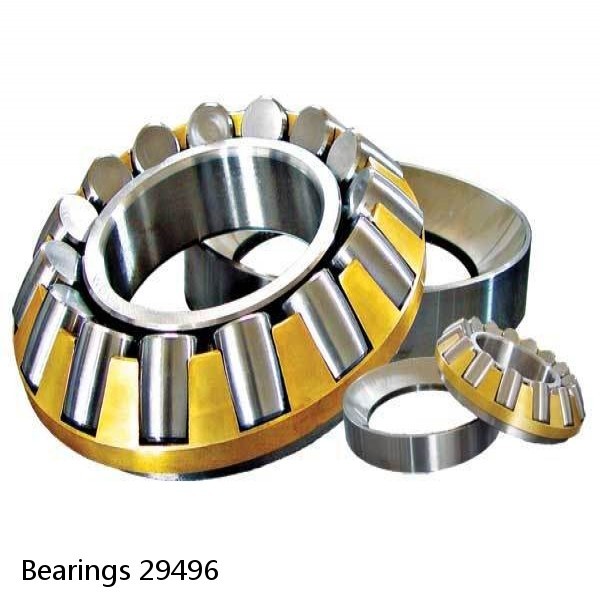 Bearings 29496
Bearings 29496 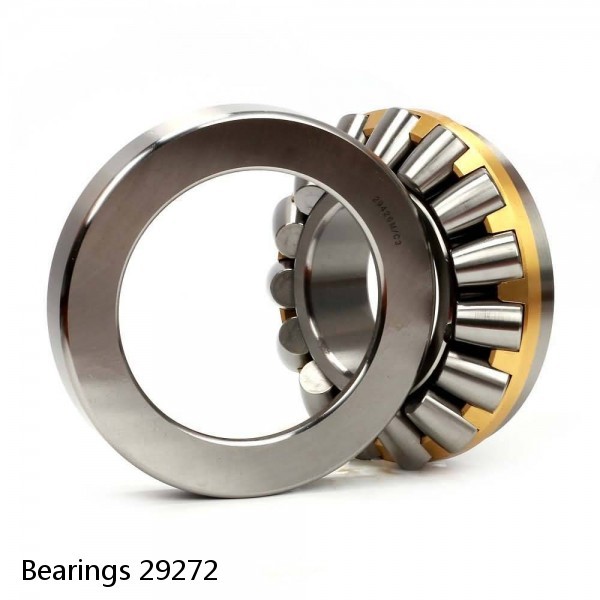 Bearings 29272
Bearings 29272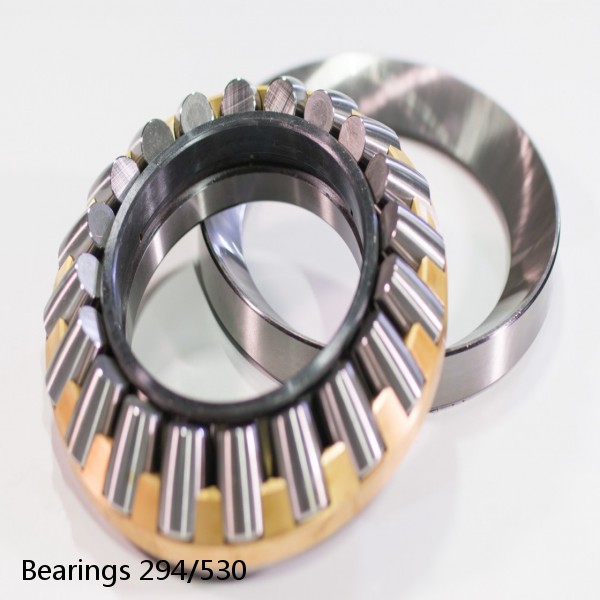 Bearings 294/530
Bearings 294/530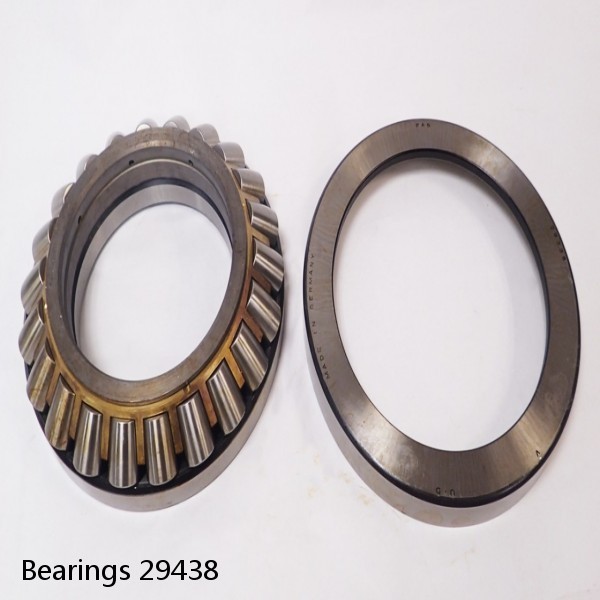 Bearings 29438
Bearings 29438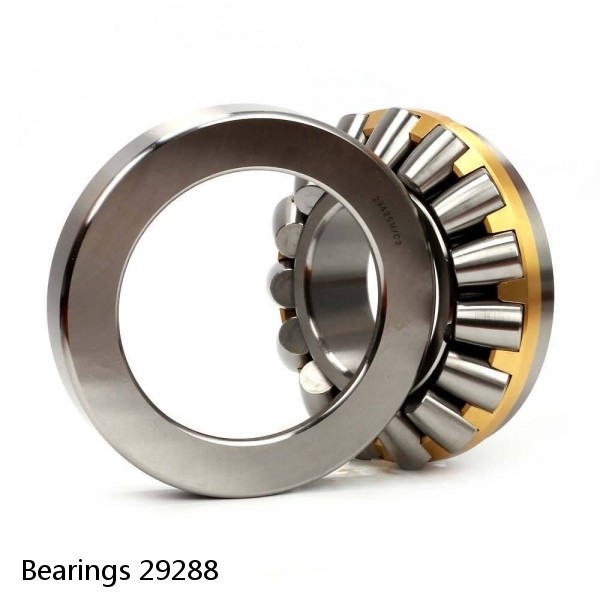 Bearings 29288
Bearings 29288